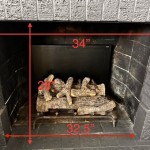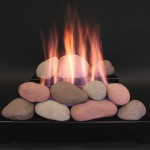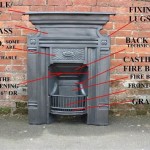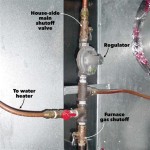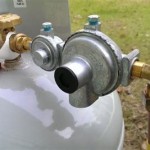The Enduring Appeal of Cast Iron Fireplace Front Bars
Cast iron fireplace front bars, also known as fire fenders, fireplace curbs, or simply fire guards, are a notable element in the history and functionality of fireplaces. These bars serve both practical and aesthetic purposes, contributing to the safety of the hearth area and enhancing the overall visual appeal of the fireplace. Their robust construction, often featuring intricate designs, reflects a period characterized by skilled craftsmanship and a focus on both utility and decorative detail.
The primary function of a cast iron fireplace front bar is to contain embers, sparks, and burning debris within the fireplace. This safety measure prevents fire hazards, protecting flooring, rugs, and nearby furniture from accidental ignition. In homes with children or pets, a fire guard provides an essential barrier, minimizing the risk of burns and accidental contact with the open flame. Furthermore, the barrier offers some protection from the radiant heat emitted by the fire, allowing individuals to enjoy the fireplace without being uncomfortably close.
Beyond their practical advantages, cast iron fireplace front bars have long been recognized for their decorative qualities. The casting process allows for the creation of intricate patterns and designs, ranging from simple geometric shapes to elaborate floral motifs and heraldic symbols. These decorative features can complement the architectural style of the room and the design of the fireplace itself. The dark, matte finish of cast iron provides a visually appealing contrast with the bright flames of the fire, further enhancing the aesthetic experience.
Historical Significance and Evolution
The use of fireplace front bars dates back centuries, evolving from simple stone or brick ledges to more refined and decorative metal structures. In the early days of open hearth cooking and heating, a basic barrier was necessary to prevent coals and embers from scattering across the floor. As homes became more sophisticated, fireplace surrounds and accessories evolved to reflect changing tastes and technological advancements. Cast iron, emerging as a readily available and durable material, became a popular choice for fireplace front bars during the 18th and 19th centuries.
The Victorian era, in particular, saw a flourishing of cast iron designs. Foundries produced a vast array of fireplace front bars, reflecting the prevailing aesthetic of ornate detailing and elaborate ornamentation. These bars often incorporated classical motifs, such as acanthus leaves, Greek key patterns, and representations of mythical creatures. The rise of the Industrial Revolution facilitated mass production, making these decorative elements accessible to a wider range of homeowners. Consequently, cast iron fireplace front bars became a common feature in homes across various social classes.
Over time, trends in fireplace design have shifted, with gas and electric fireplaces becoming increasingly prevalent. While these modern alternatives often include built-in safety features, the appeal of a traditional wood-burning fireplace with a cast iron front bar remains strong. Many homeowners appreciate the authenticity and charm of a historical fireplace, and the front bar serves as a visual reminder of a bygone era.
Materials and Manufacturing
Cast iron, a ferrous alloy with a high carbon content, is the primary material used in the creation of fireplace front bars. The properties of cast iron—its strength, durability, and ability to be molded into intricate shapes—make it ideally suited for this application. The manufacturing process typically involves creating a mold, pouring molten iron into the mold, and allowing it to cool and solidify. Once the casting has cooled, it is removed from the mold and undergoes finishing processes, such as grinding, polishing, and painting or coating.
The composition of the cast iron can vary depending on the specific application and desired properties. Gray cast iron, characterized by its graphite flake structure, is commonly used for fireplace front bars due to its excellent damping capacity and resistance to wear. Ductile iron, a more modern variant, offers higher tensile strength and ductility, making it suitable for components that require greater load-bearing capacity. The choice of cast iron grade depends on factors such as the size and complexity of the design, the intended use of the front bar, and the desired aesthetic characteristics.
Surface treatments play a crucial role in protecting cast iron from corrosion and enhancing its appearance. Traditional finishes include black paint, enamel coatings, and wrought iron effects. These finishes provide a protective barrier against moisture and other environmental factors, preventing rust and extending the lifespan of the front bar. Modern coatings, such as powder coating and ceramic finishes, offer improved durability and resistance to heat, making them suitable for high-temperature environments. The selection of an appropriate finish is essential for maintaining the aesthetic appeal and structural integrity of the cast iron fireplace front bar.
Design Considerations and Style Adaptations
The design of a cast iron fireplace front bar should complement the style of the fireplace and the overall decor of the room. A wide range of designs are available, from simple, minimalist bars to elaborate, ornate creations. Factors to consider include the size and shape of the fireplace opening, the architectural style of the building, and the personal preferences of the homeowner. A well-chosen front bar can serve as a focal point in the room, enhancing the visual impact of the fireplace.
For traditional settings, ornate designs featuring classical motifs, floral patterns, and heraldic symbols are often appropriate. These designs evoke a sense of history and elegance, reflecting the aesthetic of the Victorian and Edwardian eras. Simple, geometric designs with clean lines may be more suitable for modern or contemporary spaces. These designs emphasize functionality and minimalism, creating a sleek and understated look. The choice of design should be carefully considered to ensure that the front bar harmonizes with the surrounding environment.
The size and shape of the front bar should be proportional to the fireplace opening. A bar that is too small may appear insignificant, while a bar that is too large may overwhelm the fireplace. The height of the front bar should be sufficient to contain embers and sparks but should not obstruct the view of the fire. The depth of the bar should be adequate to provide a stable barrier without protruding excessively into the room. Careful consideration of these dimensional factors is essential for ensuring both the safety and the aesthetic appeal of the front bar.
The style and finish of the front bar can also be adapted to suit individual preferences. Black paint or a wrought iron effect is a classic choice that complements a wide range of styles. Brass or bronze accents can add a touch of elegance and sophistication. Modern finishes, such as polished chrome or brushed nickel, may be appropriate for contemporary settings. The selection of a suitable finish allows homeowners to customize the appearance of their fireplace and create a cohesive design scheme.
Moreover, customization options extend to the incorporation of personal touches. Some manufacturers offer bespoke design services, allowing customers to create unique fireplace front bars that reflect their individual style and preferences. This may involve incorporating family crests, monograms, or other symbolic elements into the design. The ability to personalize the front bar allows homeowners to create a truly unique and meaningful addition to their home.
Maintenance and Care
Proper maintenance is essential for preserving the aesthetic appeal and structural integrity of cast iron fireplace front bars. Regular cleaning should be performed to remove dust, soot, and other debris that can accumulate on the surface of the iron. A soft brush or cloth can be used to gently wipe down the front bar, taking care to avoid scratching the finish.
If rust develops on the surface of the iron, it should be treated promptly to prevent further corrosion. Light rust can often be removed with a wire brush or steel wool. More severe rust may require the use of a chemical rust remover. After removing the rust, the affected area should be cleaned and treated with a rust-inhibiting primer before being repainted or recoated.
The finish of the front bar should be inspected periodically for signs of wear and tear. Scratches, chips, and other damage should be repaired promptly to prevent further deterioration. Small scratches can often be touched up with matching paint or coating. More extensive damage may require the removal of the old finish and the application of a new coating. Proper maintenance of the finish is essential for protecting the cast iron from corrosion and preserving its aesthetic appeal.
In addition to regular cleaning and maintenance, it is important to protect the front bar from excessive heat and moisture. While cast iron is a durable material, it can be damaged by prolonged exposure to extreme temperatures or humidity. Avoid placing flammable materials directly against the front bar, and ensure that the fireplace is properly ventilated to prevent the buildup of moisture. Taking these precautions will help to extend the lifespan of the front bar and ensure that it remains a beautiful and functional feature of the fireplace for many years to come.

Fireplace Bars Frets

Cast Iron Scrollwork Fire Screen With Doors Plow Hearth

Fireplace Bars Frets

Barton 4 Panel Wrought Iron Fireplace Screen Fire Spark Guard Hinged Doors With Tools 96323 The Home Depot

Fireplace Bars Frets

J Day 10149 18 6n Fret Fireplace Front Bars Cast Iron Black Paint Sr1 Jd1043

B3 Free Standing Cast Iron Victorian Front Bar Fireplace

Bar Iron Stoll Industries

Antique Cast Iron Fireplace Electric Gas Flamerite Fires

Victorian And Edwardian Cast Iron Fireplace Front Bars
Related Posts

